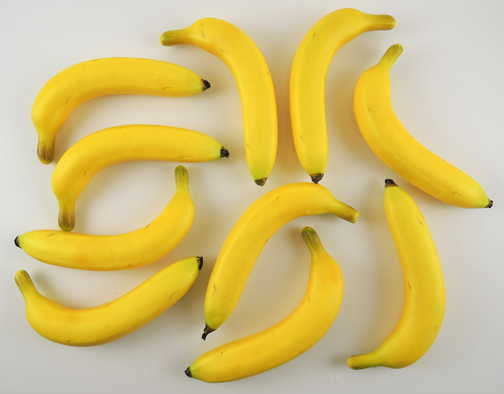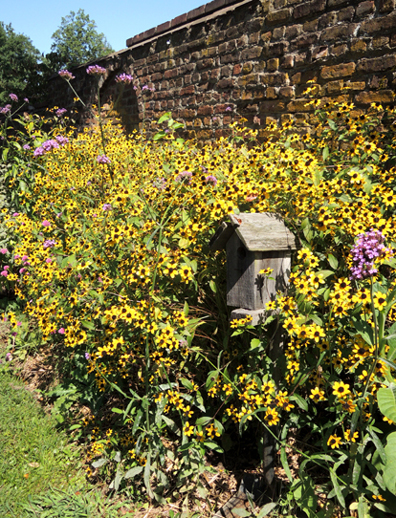
You had a sneak peek here…today we’ll be sharing the sunshine-filled details of our Secret Garden event, which took place on the gorgeous grounds of Morven Museum & Garden!
Morven Museum & Garden is a historical landmark located in Princeton, New Jersey. It is the former Governor’s Mansion and, for more than 250 years, has been the home of five New Jersey governors and Richard Stockton, a signer of the Declaration of Independence. Morven’s house, outbuildings, grounds, and new Stockton Education Center are absolutely beautiful. So when they offered their gardens for a collaboration, we jumped at the chance.
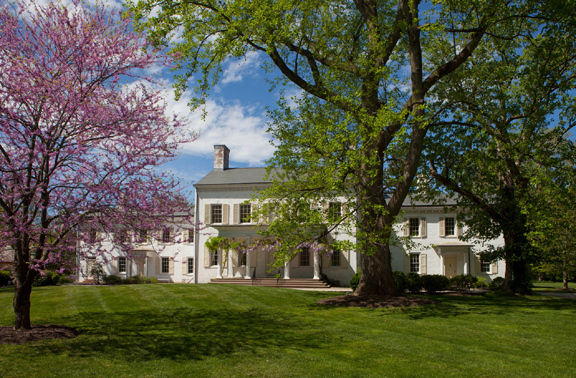
Image courtesy of Morven Museum & Garden. Photo by Richard Speedy
Katie and I have been wanting to do a Secret Garden event for ages, and we especially wanted to focus on the novel’s themes of discovery, exploration, playfulness, and interaction with the the natural world. And Morven’s gardens are so beautiful…
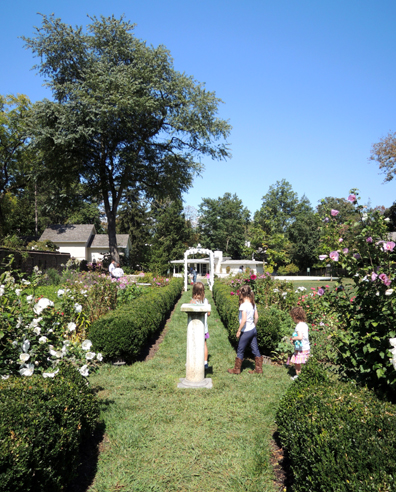 In the Secret Garden, the 3 children build a private world within their walled garden, and we wanted to replicate that feeling. We found these terrific 39.5″ x 39.5″ x 43.5″ canvas play tents on Amazon (a bit pricey at $65 a pop, but they will be used for other events, so win!):
In the Secret Garden, the 3 children build a private world within their walled garden, and we wanted to replicate that feeling. We found these terrific 39.5″ x 39.5″ x 43.5″ canvas play tents on Amazon (a bit pricey at $65 a pop, but they will be used for other events, so win!):
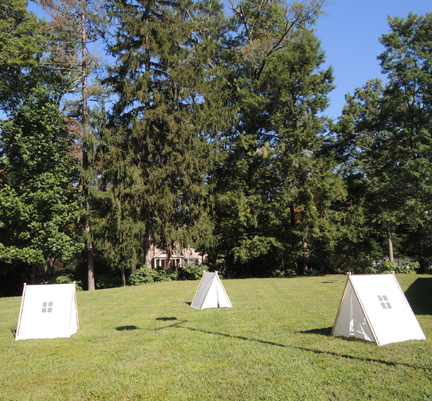 The tents were a HUGE hit, and were in constant use all day long. They were light enough for kids to move around, so there were a number of interesting configurations throughout the day (my favorite being a long tent tunnel). Not far from the tents were wood slice stepping stones, which Princeton University’s Grounds & Maintenance was kind enough to donate…
The tents were a HUGE hit, and were in constant use all day long. They were light enough for kids to move around, so there were a number of interesting configurations throughout the day (my favorite being a long tent tunnel). Not far from the tents were wood slice stepping stones, which Princeton University’s Grounds & Maintenance was kind enough to donate…
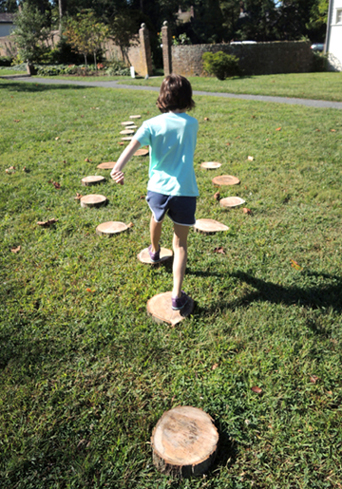 We pulled aside 2 of the larger wood slices to make tic tac toe boards. Use a permanent marker or paint to draw the board, and 2 different color rocks for the pieces.
We pulled aside 2 of the larger wood slices to make tic tac toe boards. Use a permanent marker or paint to draw the board, and 2 different color rocks for the pieces.
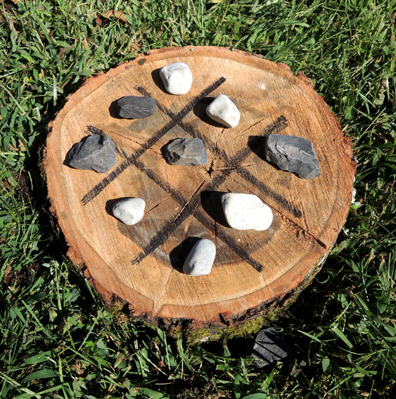 In addition to tic tac toe, we had a natural wood ring toss for the younger kids, and this cool Finnish game called Mölkky for older kids…
In addition to tic tac toe, we had a natural wood ring toss for the younger kids, and this cool Finnish game called Mölkky for older kids…
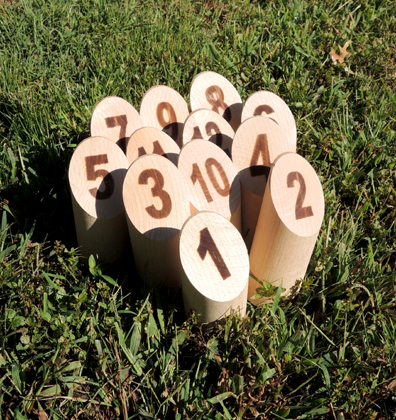 You will find a full description of Mölkky here. But basically, it’s a game that involves some semi-skilled tossing and a little basic math. It’s super chill, super fun, and perfect for families. It also won Green Toy of the Year Award in 2015! A set costs $50 on Amazon, but again, we now have it for future events.
You will find a full description of Mölkky here. But basically, it’s a game that involves some semi-skilled tossing and a little basic math. It’s super chill, super fun, and perfect for families. It also won Green Toy of the Year Award in 2015! A set costs $50 on Amazon, but again, we now have it for future events.
Meanwhile, on the slate patio near Morven’s garden fountain, there was natural paint brush painting:
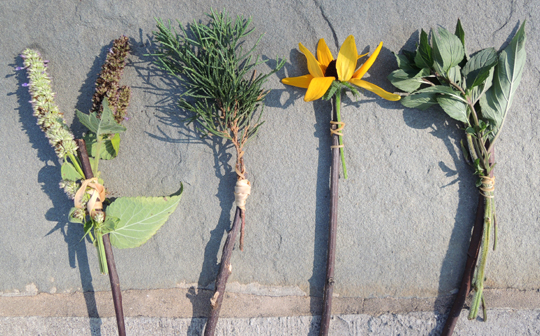 The brushes are 10″ sticks (thanks again Princeton Grounds & Maintenance!) with various flowers and foliage attached to the ends with rubber bands. Kids dipped the brushes into bowls of water and experimented with the different patterns the brushes created on the slate patio.
The brushes are 10″ sticks (thanks again Princeton Grounds & Maintenance!) with various flowers and foliage attached to the ends with rubber bands. Kids dipped the brushes into bowls of water and experimented with the different patterns the brushes created on the slate patio.
If you do this activity at your event, however, have big buckets of water handy, not just bowls. We quickly learned that kids like to carry and move the bowls with them, which inevitably tip over. I had to do a lot of monitoring and refiling to keep the project going.
We also had a very, very popular bubble wand station! We bought three, 15 piece bubble sets with giant wands on Amazon for $8. Plus two, 64oz bottles of solution for $9. We should have bought more solution folks, because we ran out halfway through the event! We recommend one 64oz bottle of solution per hour, minimum.
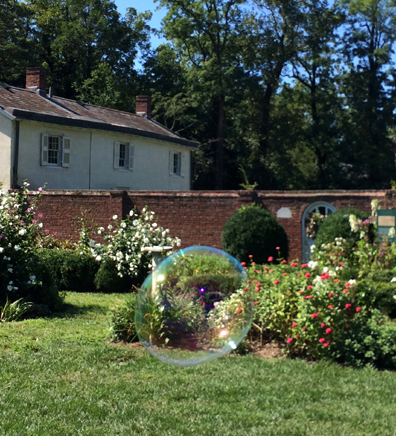 We ran 5 hands-on craft tables at the event as well: nature print bookmarks, paperclip robins, bean mosaics, racing caterpillars, and butterfly feeders.
We ran 5 hands-on craft tables at the event as well: nature print bookmarks, paperclip robins, bean mosaics, racing caterpillars, and butterfly feeders.
1: NATURE PRINT PAPER
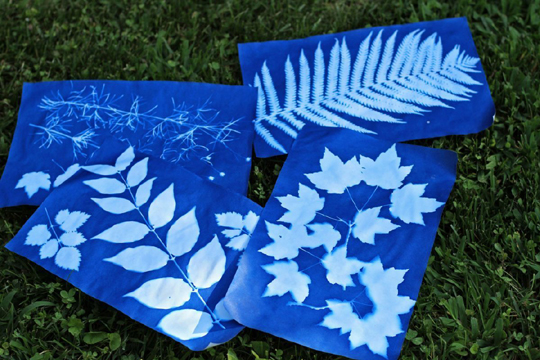
From Run Wild My Child
Nature print paper (sometimes also called sun print paper) is a staple of science classes everywhere. We bought our 5″ x 7″ sheets on Amazon (a pack of 40 sheets cost $11), but to stretch the budget, we cut each sheet into 1.5″ x 7″ strips that would later serve as bookmarks. All you need are some garden clippings, tubs of water, and paper plates for carrying your creation while it fully dries. Helming the table was Hope, our teen tester, who also volunteers at Morven!
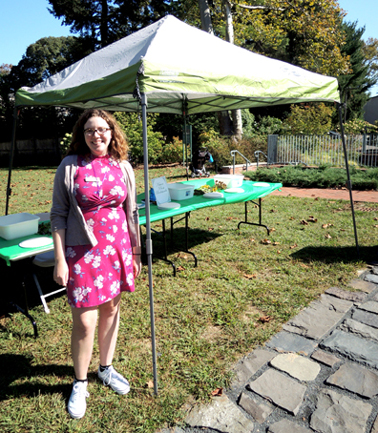 This photo was taken right before the event officially started. Hope was pretty much mobbed the rest of the day. TOTAL TROOPER.
This photo was taken right before the event officially started. Hope was pretty much mobbed the rest of the day. TOTAL TROOPER.
2: PAPERCLIP ROBINS
 A robin plays an integral part of introducing Mary to the secret garden, so we borrowed this craft from Family Fun magazine. All you need are a pair of paperclips, heavy weight paper, scissors, tape, and a hole punch. Voilà! Personal robin!
A robin plays an integral part of introducing Mary to the secret garden, so we borrowed this craft from Family Fun magazine. All you need are a pair of paperclips, heavy weight paper, scissors, tape, and a hole punch. Voilà! Personal robin!
3: BEAN MOSAICS
For a longer, more focused event project, we offered bean mosaics similar to the one pictured above. We provided kids with 3″x3″ squares of poster board. Baby wipes are a good idea for cleaning up hands and work areas, and paper plates are also good for carrying around your creation as it’s drying.
4: RACING CATERPILLARS
Honestly, you have to see these things in action to really appreciate them. A bit of folding, a drinking straw, and this little caterpillar really races! We had 2 table top race tracks at the event, and the competition was fierce (but there was plenty of laughter too). If you’d like some folding instructions to display on your event tabletop, you’ll find those here.
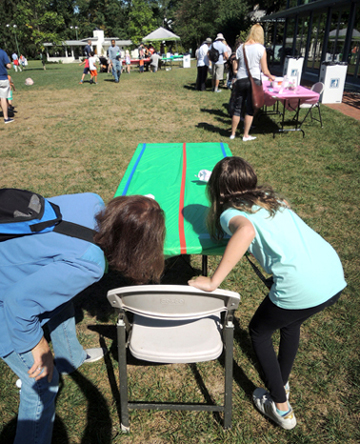
5: BUTTERFLY FEEDERS
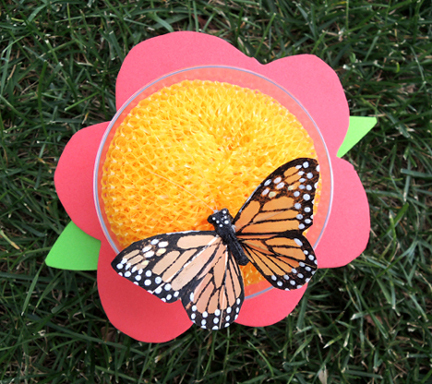 This project was previously featured in a sneak peek post (which you will find here). But there’s an extra special event connection…Morven’s Head Horticulturist, Louise Senior, was tagging butterflies that day!
This project was previously featured in a sneak peek post (which you will find here). But there’s an extra special event connection…Morven’s Head Horticulturist, Louise Senior, was tagging butterflies that day!
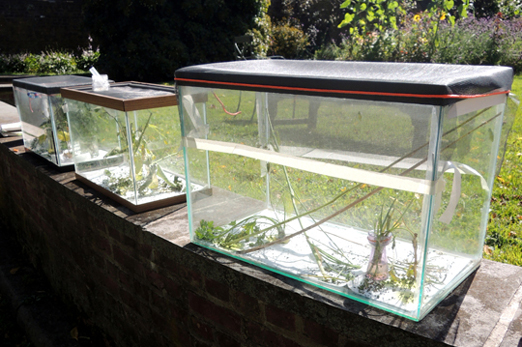 Louise brought out a trio of tanks and monarchs in their various forms to lecture about life cycles and butterfly science. Then she tagged and released monarchs to the skies!
Louise brought out a trio of tanks and monarchs in their various forms to lecture about life cycles and butterfly science. Then she tagged and released monarchs to the skies!
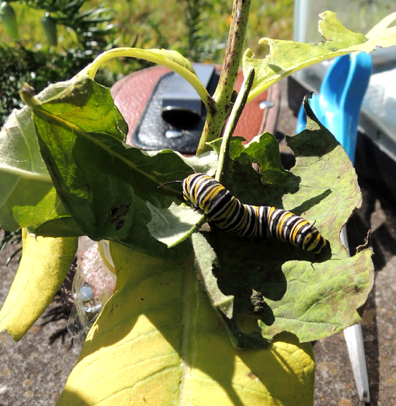
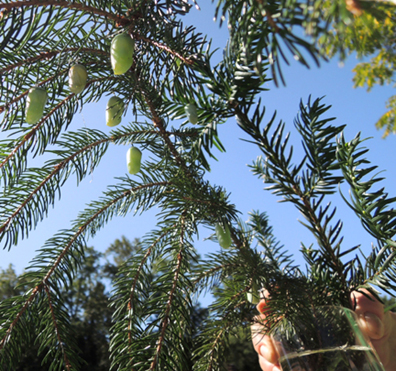
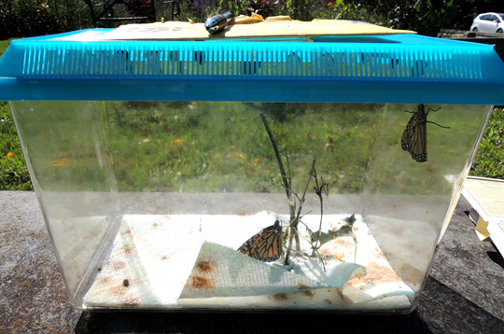
AND FINALLY…
We did have ONE MORE event activity that day. In the book, Mary unearths the garden key that was buried by a grieving Archibald Craven. In the spirit of her life-changing discovery, we designed a key hunt. We hot glued 6 vintage keys to craft sticks and staked them throughout the garden grounds.
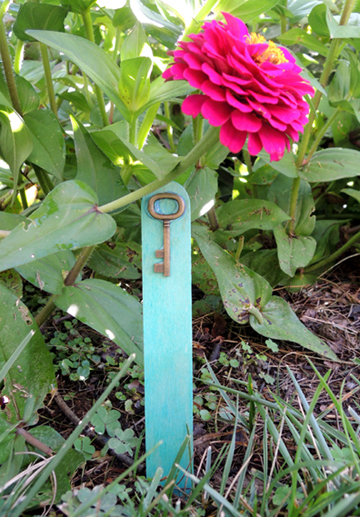 Each key was assigned a rainbow color so kids would know when they found all 6. Once they reported their success at key hunt HQ, they were rewarded with a vintage mini key of their choice (and yes, we are STILL reusing those mini keys we bought bulk for this Sherlock Holmes escape room!). We had string handy, in case kids wanted to wear their keys home as necklaces.
Each key was assigned a rainbow color so kids would know when they found all 6. Once they reported their success at key hunt HQ, they were rewarded with a vintage mini key of their choice (and yes, we are STILL reusing those mini keys we bought bulk for this Sherlock Holmes escape room!). We had string handy, in case kids wanted to wear their keys home as necklaces.
The hidden key activity was not only related to the book, it was a great way to simple get out and explore the gardens, high and low, near and far…
It was a glorious day, and we would like to sincerely thank Morven Museum & Gardens for opening their home to us. Their staff and volunteers were absolutely wonderful. A very special thanks to Curator of Education and Public Programs, Debra Lampert-Rudman, for being so enthusiastic, accommodating, and full of joy.

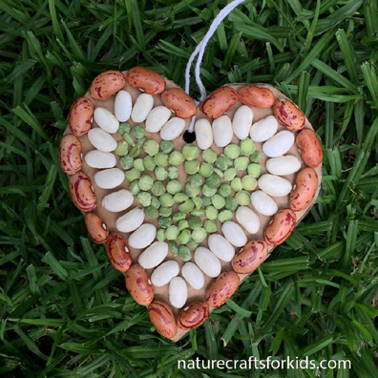
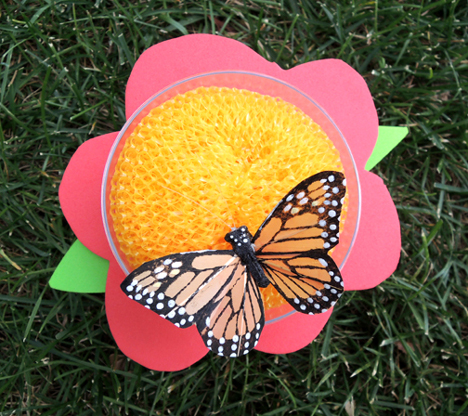 Tomorrow, our library is kicking off the programming year with a Secret Garden event at
Tomorrow, our library is kicking off the programming year with a Secret Garden event at 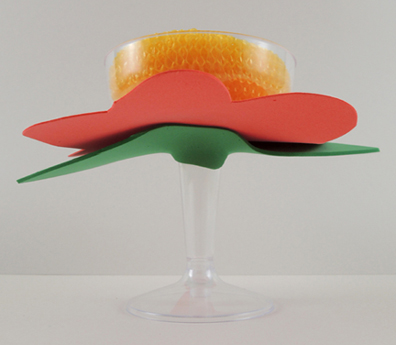 To make the homemade butterfly nectar, mix 9 teaspoons of water with 1 teaspoon of white sugar. Pop it in the microwave for about 45 seconds. Pour the nectar on top of the pot scrubber…your butterfly buffet is ready!
To make the homemade butterfly nectar, mix 9 teaspoons of water with 1 teaspoon of white sugar. Pop it in the microwave for about 45 seconds. Pour the nectar on top of the pot scrubber…your butterfly buffet is ready!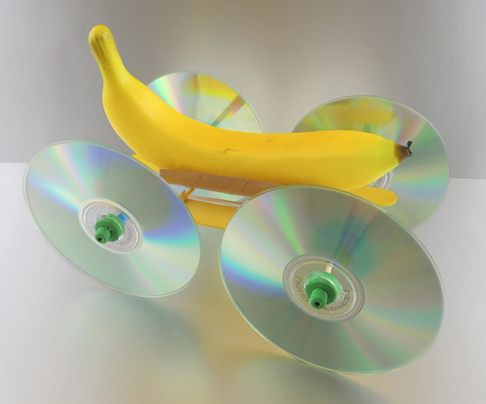 This banana’s going mobile, thanks to its CD wheels and rubber band engine! And why did we rig this fruit to roll? Four words: fusion, bananas, trolls, and technology. This feat of engineering was was constructed at
This banana’s going mobile, thanks to its CD wheels and rubber band engine! And why did we rig this fruit to roll? Four words: fusion, bananas, trolls, and technology. This feat of engineering was was constructed at 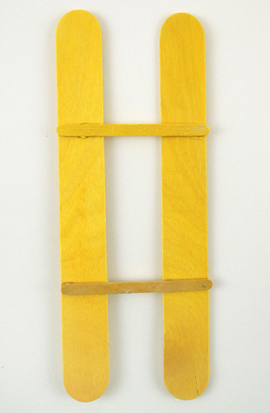 Next, cut a toilet paper tube in half, then hot glue it on top of the mini craft sticks:
Next, cut a toilet paper tube in half, then hot glue it on top of the mini craft sticks: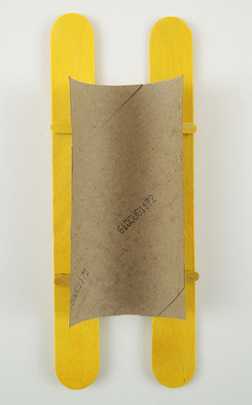 This creates your “banana saddle,” which keeps the bottom of your banana from interfering with the rubber band motor. Here’s a side view of the finished saddle:
This creates your “banana saddle,” which keeps the bottom of your banana from interfering with the rubber band motor. Here’s a side view of the finished saddle: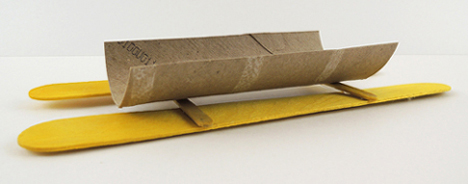 To create the rubber band motor, tightly wrap a brass fastener around the center of a 5.75″ piece of bamboo skewer. You want to prongs to be nice and tight, but make sure there’s still a little room under the head of the brass fastener for the rubber band.
To create the rubber band motor, tightly wrap a brass fastener around the center of a 5.75″ piece of bamboo skewer. You want to prongs to be nice and tight, but make sure there’s still a little room under the head of the brass fastener for the rubber band.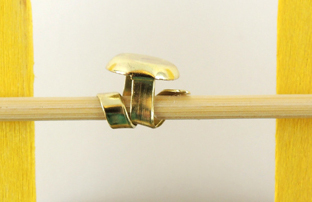 Cut a drinking straw into 3 pieces (two 1.5″ pieces, and one 3.75″ piece). Thread the 2 smaller pieces on either side of the bamboo skewer with the brass fastener. Then thread the larger straw piece onto the other bamboo skewer. Hot glue the straws directly to the jumbo craft sticks, then loop a rubber band onto the center of the longer straw. The underside of your car should now look like this:
Cut a drinking straw into 3 pieces (two 1.5″ pieces, and one 3.75″ piece). Thread the 2 smaller pieces on either side of the bamboo skewer with the brass fastener. Then thread the larger straw piece onto the other bamboo skewer. Hot glue the straws directly to the jumbo craft sticks, then loop a rubber band onto the center of the longer straw. The underside of your car should now look like this: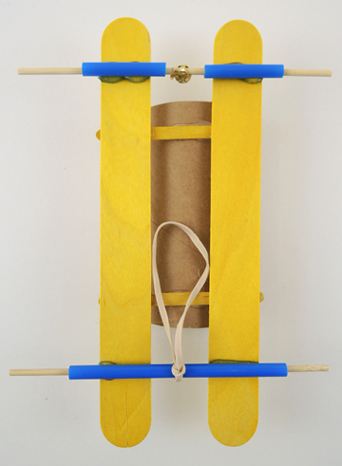 Later, you will wrap the rubber band around the head of the brass fastener, then wind the wheel and the axle to tighten the rubber band and prime the banana car’s “motor”:
Later, you will wrap the rubber band around the head of the brass fastener, then wind the wheel and the axle to tighten the rubber band and prime the banana car’s “motor”: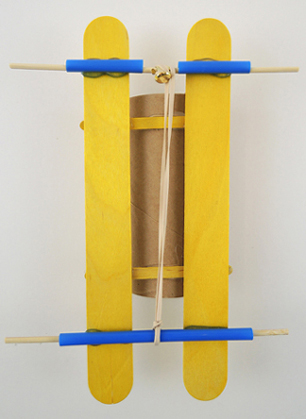 The car’s wheels are surplus CDs we obtained via donation from various University departments. We pushed a foam bead through the holes of each CDs, then hot glued them for extra security. Slide the wheels onto the ends of the bamboo skewers, then hot glue another foam bead to the outside of each wheel.
The car’s wheels are surplus CDs we obtained via donation from various University departments. We pushed a foam bead through the holes of each CDs, then hot glued them for extra security. Slide the wheels onto the ends of the bamboo skewers, then hot glue another foam bead to the outside of each wheel.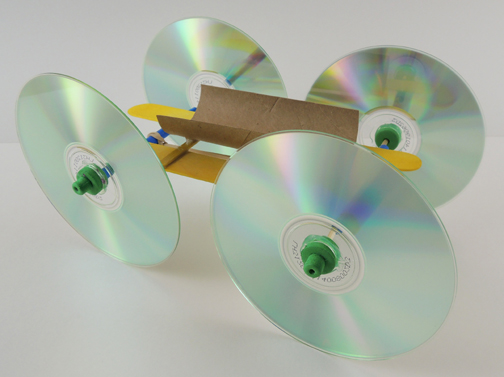 The car is ready to go…all you need is a banana! We actually went with FAKE bananas for this project (Amazon: 6 cost $11). Firstly, fake bananas don’t ripen inconveniently. Secondly, fake bananas are lighter, which meant that the cars would roll a little further.
The car is ready to go…all you need is a banana! We actually went with FAKE bananas for this project (Amazon: 6 cost $11). Firstly, fake bananas don’t ripen inconveniently. Secondly, fake bananas are lighter, which meant that the cars would roll a little further.